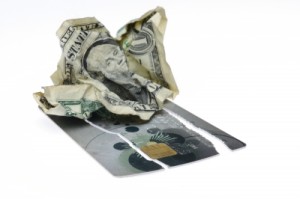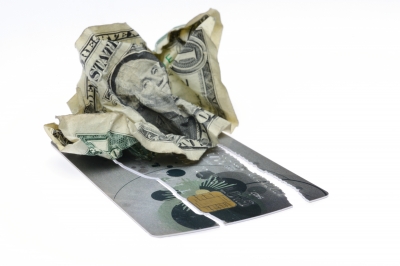 “There are studies that indicate that economic growth slows when public and private debt exceeds 260% to 275% of GDP. The U.S. hit the 260% level in 2000.”
“There are studies that indicate that economic growth slows when public and private debt exceeds 260% to 275% of GDP. The U.S. hit the 260% level in 2000.”
A recent paper by Hoisington Investment Management Company (available here) does an excellent job describing why the Federal Reserve is, and will continue to be, unsuccessful in its efforts to engineer economic growth by devaluing the U.S currency and attempting to increase inflation through persistent “Quantitative Easing”. They cite four factors:
1) The Fed’s Forecast: If the Fed’s forecasts were consistently right, we could have confidence that their actions might positively impact the economy. However, their forecasts for GDP and inflation have been “consistently above the actual outcomes”. They assume higher stock prices will lead to more spending because people feel wealthier if their portfolio is rising. This “wealth effect” has not occurred, nor is there evidence that this correlation always exists.
I would add to this argument that continued uncertainty about the future financial health of individuals and the country eliminates any wealth effect in the short-run.
2) Excessive Debt: There are studies that indicate economic growth slows when public and private debt exceeds 260% to 275% of GDP. The U.S. hit the 260% level in 2000. This has caused real median household income to decline and with it the standard of living.
I suggest this has led to “debt saturation”, a point at which each dollar of debt added produces NEGATIVE productivity and actually reduces GDP per dollar invested in the economy (see blog post here). No company or government can survive with negative returns on their “investments”.
3) Scholarly Evidence that Large Scale Asset Purchases (LSAP) Don’t Work: We have been using LSAP as a Fed strategy with no evidence of proportionate economic improvement. While the Fed’s balance sheet has increased fourfold, there has been no measurable benefit to the economy.
I would add that this policy is also contributing to the fear and uncertainty that is stagnating the economy. No one knows what will happen when the Fed unwinds an LSAP of this scale, so even those who have seen their “wealth” increase during the past 5 years fear it is not real or permanent wealth. Also, the policies have not benefited the vast majority of working Americans; only the “elite” investment class. There remain few incentives to create jobs through U.S. based business expansion due to high corporate income taxes and a crippling regulatory environment.
It is also interesting to note that John Maynard Keynes, the father of Keynesian economic stimulus, would not recommend the current LSAP policy. Keynes was an economic nationalist who was opposed to globalization in large part because he believed stimulus policies would not be effective in a global economy. He warns of “capital leakage” when countries in a global economy attempt stimulus. He would counsel that money injected into the U.S. economy is likely to be spent on the expansion of offshore operations and not likely to create jobs for those in the U.S. See his position on stimulus in a global economy here.
4) Money Velocity: The fourth problem is that the Fed cannot control the velocity of money. The authors state: “Nominal GDP is equal to the velocity of money (V) multiplied by the stock of money (M), thus GDP = M x V” (p. 3). The velocity of money reached its peak in 1997 as the private and public debt reached the nonproductive zone, discussed in bullet #2, and has been falling ever since. It is currently the lowest it has been in 60 years. The accumulation of high levels of debt has rendered monetary policy ineffective.
The paper goes on to describe the unintended consequences associated with Fed monetary policy, but you’re probably already living them.
Dr. Holly A. Bell is an Associate Professor teaching business and economics at the Mat-Su College of the University of Alaska Anchorage in Palmer, Alaska. You can visit her website at www.professorhollybell.com or follow her on Twitter at @HollyBell8

Reading this above prompts me to ask:
When will the US gov. State & county spending finally be trimmed so it is rational & sustainable?
What will happen when interest rates escalate? (excessive Inflation occurs? and the dollar weakens dramatically?).
What policies or events must occur to create real US economic stability? and job growth ? GDP Growth?
What must be done to instill a justified rational confidence in the country, currency & economy?
With high degrees of uncertainly I believe our economy will remain sluggish, and investments will go off shore.
I am thinking my god, should we build a financial strategies for our estates children that include heavy foreign safe harbor placements?
[WORDPRESS HASHCASH] The poster sent us ‘0 which is not a hashcash value.
There is no significant inflation and has not been for years. So there is no evidence that quantitative easing has or will cause inflation. The reason there is little inflation is because consumer demand, which is 70% of the economy, is slow. And the cause of this low demand is mainly that real wages paid to workers has been growing slower than their growth in productivity for the past 40 years.
The industrial capitalist owners of the means of production (capitalist employers) have been keeping an ever increasing share of this income for themselves. This phenomenon is causing the ever increasing wealth and income gap between the top 20% percent of income “earners” and everyone else. Real incomes have actually been falling for at least the lowest 40% of income earners since 1973.
Since the big industrial capitalist corporations and their wealthy owners are refusing to invest and/or spend a significant amount of their wealth and income in the economy, the Fed has to do quantitative easing; and the Federal government has to increase spending, in order to create aggregate demand in the economy. These actions were and are the only things that are saving the skins of the wealthy.
If there was not these monetary actions being done by the Fed and the government, a recession much worse than “the great depression” would occur. And not only would the masses suffer great physical and mental pain from a loss of their incomes because of high unemployment, the wealthy minority would have to start spending down their wealth because of a massive decrease in their incomes. By the way, the last thing the wealthy want to do is to spend their wealth. In such a recession, the masses would inturn revolt and overturn the industrial capitalist economic system and usher in a socialist system, And the American rulers know this. I could go on, but must I 🙂
[WORDPRESS HASHCASH] The poster sent us ‘0 which is not a hashcash value.
I see you\’ve studied Marxist economic theory and so on those points we will have to agree to disagree. I would add, however, that the reason there has been no inflation is because the velocity of money is at an all time low. The economy will not fully recover until the VOM improves substantially and when it does, that is when the inflation risk increase dramatically.
[WORDPRESS HASHCASH] The poster sent us \’0 which is not a hashcash value.
Hi Holly,
If the velocity of money is at an all time low, it’s because consumer spending (consumer demand) is low. And this is mainly due to the fact that the majority of people’s (the majority of the population) real income is falling. This is so for the causes I mentioned in my previous comment. Also, there is another fundamental cause for the low demand, which I forgot to mention before; that is, lower income people have a higher propensity to consume than do higher income people. This is because they have to spend a higher proportion of their income for at least the basic goods and services that are needed to just survive. So when their income falls, they cannot afford to spend as much on other less necessary and luxury type goods and services. So when this phenomena occurs, the higher income groups, especially the very high income groups, do not pick up the full slack in the over fall in aggregate demand. This is so because these high income groups experience a continuous decreasing marginal utility ( need and desire) for every extra dollar they spend on additional goods and services.
However, without an increase in government spending and Fed quantitative easing under the economic condition of a decrease in aggregate demand, a slow down in economic growth will turn into a recession and then will spiral down into a deep recession. In such a situation, the average person, who is an average worker, cannot and will not want to take, and cannot tolerate taking, the lion share of the physical pain and suffering that occurs in a severe recession. Thus, such persons will eventually revolt politically if their suffering is not modified, as I indicated before.
By the way, yes, I have studied Marxist economic theories. But, most elite economists have studied it to some extent also. But even though I’m part of the elite, that did stop me from about Marxist economics. There is a lot to be learned about economics from Marx. Also, much of what I know to be key to macro economics understanding and believe to be true came from John Hobson, and John M. Keynes.
[WORDPRESS HASHCASH] The poster sent us ‘0 which is not a hashcash value.
I am not part of the elite. This is a correction of something I wrote above.
[WORDPRESS HASHCASH] The poster sent us ‘0 which is not a hashcash value.